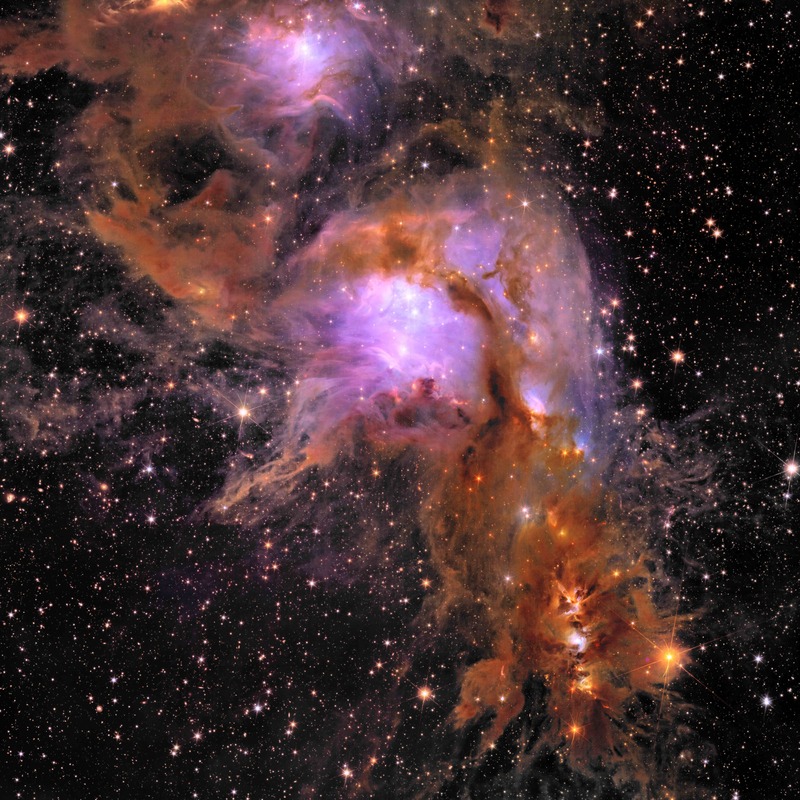This breathtaking image features Messier 78 (the central and brightest region), a vibrant nursery of star formation enveloped in a shroud of interstellar dust. This image is unprecedented – it is the first shot of this young star-forming region at this width and depth. This image is released as part of the Early Release Observations from ESA’s Euclid space mission.
Euclid peered deep into this enshrouded nursery using its infrared camera, exposing hidden regions of star formation for the first time, mapping its complex filaments of gas and dust in unprecedented detail, and uncovering newly formed stars and planets. This is the first time we’ve been able to see these smaller, sub-stellar sized objects in Messier 78; the dark clouds of gas and dust usually hide them from view, but Euclid’s infrared ‘eyes’ can see through these obscuring clouds to explore within.
Euclid’s sensitive instruments can detect objects just a few times the mass of Jupiter, and its visible and infrared instruments – the VIS and NISP cameras – reveal over 300 000 new objects in this field of view alone. Scientists are using this data to study the amount and ratio of stars and sub-stellar objects here, which is key to understanding the dynamics of how star populations form and change over time. Sub-stellar objects like brown dwarfs and free-floating or ‘rogue’ planets are also one possible candidate for dark matter. While our current knowledge suggests that there aren’t enough of these objects to solve the mystery of dark matter in the Milky Way, it remains an open question, and one that Euclid will definitively answer by probing a significant fraction of our galaxy.
Also visible to the top of the frame is the bright nebula NGC 2071, and a third filament of star formation towards the bottom of the image (with a ‘traffic light’-like appearance). This lower region is a dark nebula producing lower-mass stars, all arranged along elongated filaments in space.
Messier 78 lies 1300 light-years away in the constellation of Orion.
Technical details: The data in this image were taken in just about one hour of observation. This colour image was obtained by combining VIS data and NISP photometry in Y and H bands; its size is 8200 x 8200 pixels. VIS and NISP enable observing astronomical sources in four different wavelength ranges. Aesthetics choices led to the selection of three out of these four bands to be cast onto the traditional Red-Green-Blue colour channels used to represent images on our digital screens (RGB). The blue, green, red channels capture the Universe seen by Euclid around the wavelength 0.7, 1.1, and 1.7 micron respectively. This gives Euclid a distinctive colour palette: hot stars have a white-blue hue, excited hydrogen gas appears in the blue channel, and regions rich in dust and molecular gas have a clear red hue. Distant redshifted background galaxies appear very red. In the image, the stars have six prominent spikes due to how light interacts with the optical system of the telescope in the process of diffraction. Another signature of Euclid special optics is the presence of a few, very faint and small round regions of a fuzzy blue colour. These are normal artifacts of complex optical systems, so-called ‘optical ghost’; easily identifiable during data analysis, they do not cause any problem for the science goals.

